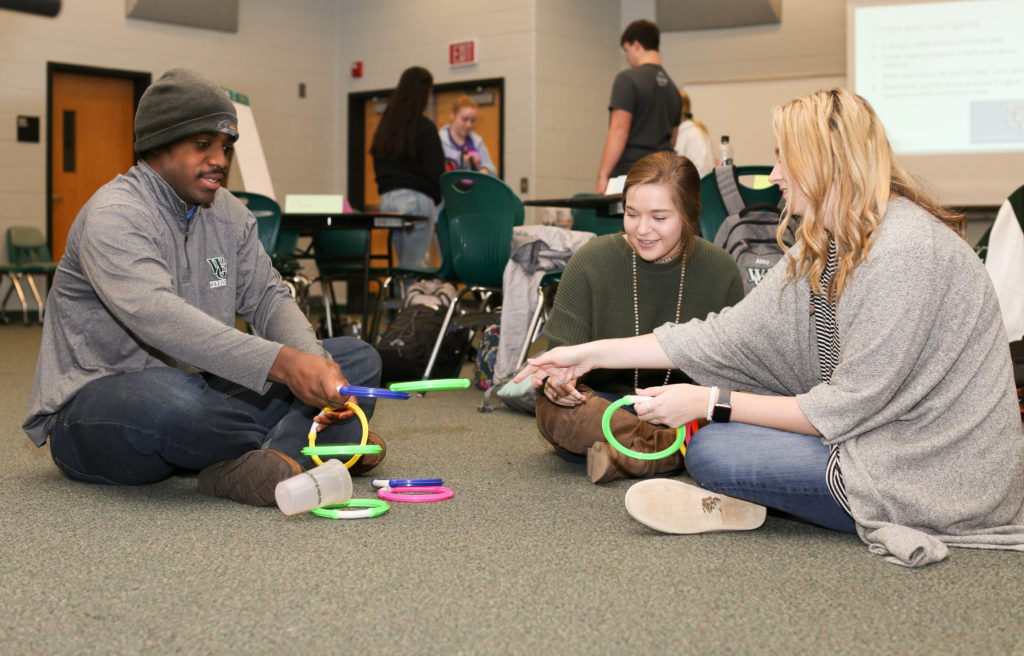A Walton County high school is seeing increased student involvement and higher graduation rates since adopting a University of Georgia youth leadership program into its curriculum.
Walnut Grove High School in Loganville in 2015 implemented the Youth Leadership in Action program, designed by the J.W. Fanning Institute for Leadership Development at UGA, a division of Public Service and Outreach. So far, 300 students have completed the curriculum, and many have gone on to serve on committees and boards that make decisions for the school.
Since the leadership curriculum was adopted by the school, graduation rates have risen from 78.3% (2013-14) to 86.2% (2016-17), which is well above the state average of 81.6%.
“The program empowers students to facilitate their own goals and develops them as leaders among their classmates,” says Walnut Grove High School Principal Sean Callahan. “We have seen school climate improve, students stay in school, become more involved and take ownership of their school, which all lead to achievement.”
Callahan said that when he became principal in 2014, he “saw that students didn’t feel as if they had a voice in their school.”
“I wanted to change that,” Callahan said.
At that time, chambers of commerce throughout the state, including in Walton County, utilized the Youth Leadership in Action curriculum, created by the Fanning Institute, targeting high school-age youth. The Walton County program serves students throughout the county, which meant only a “handful” of Walnut Grove High School students could participate at a time, Callahan said.
“I wanted to create something that would impact a larger group of students at the school,” he said.
In 2015-16, 64 teacher-nominated students made up the first Student Steering Committee, receiving leadership training and working with the school administration to develop ideas for school improvement.
“Topics included understanding leadership, goal setting and conflict management,” said Fanning Public Service Associate Lauren Healey, who helped customize the Fanning curriculum to focus on issues most relevant to the high school students. “We also teach the students about servant leadership and strategic planning to help them strengthen the school environment.”
Working with the administration, members of the steering committee have introduced new events that help motivate and reward Walnut Grove High School students:
- Warrior Day is an end-of-the-year festival to celebrate a successful school year;
- “Everyday Warriors” project includes students, sometimes 80 to 100 a week, that are nominated by teachers and recognized for being role models;
- “Warriors Leading Warriors” is a peer mentor program.
This year, the Student Steering Committee is working on two projects: creating a team that will compete with other schools in eSports — an online competition that encourages teamwork, communication, strategic thinking and leadership — and developing a school mascot to attend Warriors’ sporting events.
The success of the initial Student Steering Committee and the students’ desire to continue serving led the school to adopt a second leadership opportunity — a Student Steering Board.
Comprised of students that have served on the steering committee, the board works with the school to implement the committee’s ideas and receives additional leadership training to help them further develop in areas like project planning, goal setting and communication.
“Through the committee and board, these students learn skills that they put to use in real time in leading their peers within the school,” says Lori Tiller, a public service associate at the Fanning Institute. “The immediate and tangible application of learned leadership skills makes this program unique.”
Serving on the steering committee and steering board is a way for students to set an example and leave a legacy, said Reese Baker, a Walnut Grove High School senior.
“We are role models for other students,” Baker said. “They ask us about the committee, and it gives them something to strive for. My sister will come here next year, so I can’t wait to come back and see the results of what we’ve worked on.”
Lessons learned as a committee member also help outside of the classroom, said Walnut Grove High School senior Kris Cofie.
“Learning about my personality type and how I handle situations as a leader has helped me at work, where I am a night leader,” Cofie says. “It helps me lead others at work to get things done more effectively.”
The program at Walnut Grove is a model for other schools and communities, said Matt Bishop, director of the Fanning Institute. So far, 17 schools in Georgia have incorporated the Youth Leadership in Action curriculum into their instructional time.
“This shows how we can partner with schools to embed leadership development into the classroom and develop young people who lead in their schools and their communities,” Bishop said.
Callahan said, “Education should be about teaching students to be productive, work with others and impact their environment. We couldn’t do this without the Fanning Institute. Together, we have created something that fits our school and our goals.”
